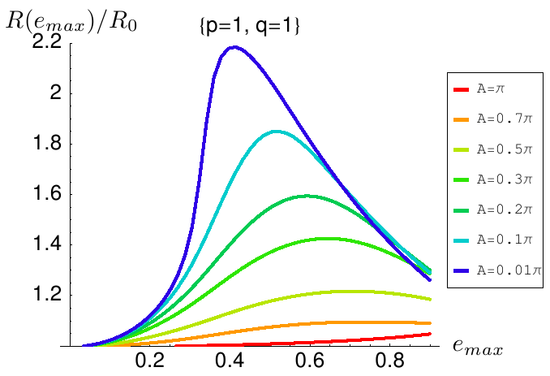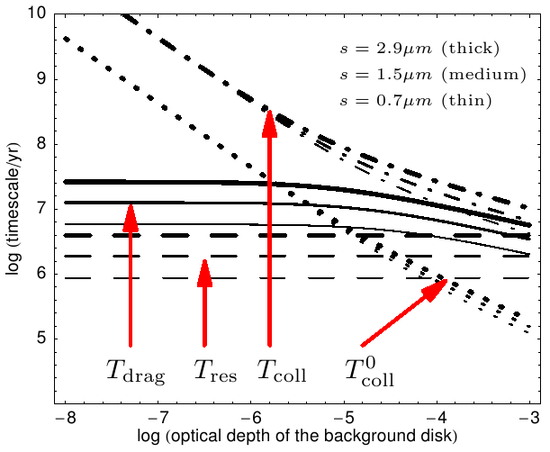This project considers theoretical models of circumstellar debris discs. The main focus is the combination of mean motion resonances between a planet and circumstellar small bodies, which create structures, and collisions among the small bodies, which smear the structures out. It is examined to what degree resonances do influence the collisional behaviour. Instead of the often applied, computer-intensive N-body-simulations we make use of statistical methods. This requires more effort on the mathematical-analytical side, but involves comparably low computational expense.
In the first part of the project collisional velocities and rates for hypothetical circumstellar debris discs are investigated. The main focus here is not the analysis of particular observed discs, but instead the investigation and representation of the influence of a mean-motion resonance on the collisional behaviour. The results show that this influence is much smaller than expected. The changes of the collisional velocity due to resonance, even a very strong one, are negligibly small. The collisional rate is influenced more strongly. It shows a highly nonlinear dependence on the parameters of the resonance but, even under the most favourable circumstances, increases by less than a factor of four (Queck et al., CMDA 99 (2007)).
In the second part of the project two analytic models aiming to explain the structures observed in debris discs are developed and compared with each other. One of them implies transport of small dust grains into resonant locations by Poynting-Robertson and stellar wind drag forces, while another one assumes cascade-like collisions of planetesimals residing in a resonance. Most of the quantitative uncertainties in the models come from poorly known stellar wind parameters (the first scenario) and insufficient knowledge of the collisional physics (the second one). Notwithstanding these uncertainties, the models allow us to explain the observed structure for a large variety of stars and discs in an easy and straightforward way (Krivov et al., A&A 462 (2007)).

Collisional rate for a 2:1 resonance as a function of the maximum eccentricity of the resonant particles for different libration width A. In case of moderate eccentricities and a strong resonant lock, the collisional rate in a resonant family is about twice as high as in a similar non-resonant ensemble.

Timescales in a colliding and resonant ensemble around a Sun-like star. A comparison shows that collisional timescales are the shortest ones at optical depths in excess of 10-4, preventing the structure formation.
